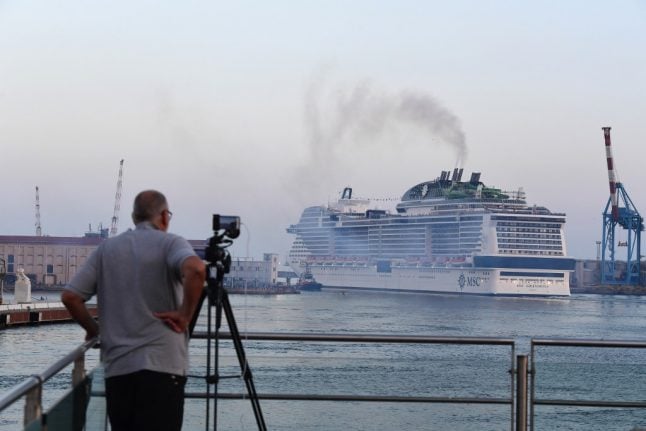“I was at home and all the buildings were shaking, worse than in a huge earthquake,” said 86-year-old Pasquale Ranieri, who lives in a five-storey building under the Morandi bridge.
Dozens of people were killed, 39 according to the latest official count, when a vast span of the viaduct fell away late Tuesday morning without warning, crashing onto railways lines far below.
While the apartments under the viaduct were largely spared the impact of the falling concrete, some 440 people evacuated from apartments under the shard of unscathed bridge face uncertainty about when, if ever, they will be allowed to live in their homes again.
“I stayed with my family last night but this is going to last months and months. I want to go home,” added Ranieri, who was worried about his food rotting now that his electricity was cut off.
Going home to recover belongings was still impossible on Wednesday, while Genoa's mayor Marco Bucci said the surviving stretch of bridge may have to be torn down — and the homes underneath may not be protected. “There is a risk that the houses are taken down,” he said.
Rescuers were scouring the mountainous piles of rubble searching for victims on Wednesday, as the toll rose to 39 with others still missing.
Frozen at the edge of a yawning precipice, a single green truck sits next to the edge of the surviving stretch of bridge, having halted just seconds from disaster.
'It is a scandal'
At the security perimeter encircling the endangered buildings, two police officers stand guard, refusing to bow to the pleas of the dozens of inhabitants who have been desperate to go home since dawn.
READ ALSO: Genoa bridge collapse a disaster 'waiting to happen'
READ ALSO: Italian government threatens to revoke motorway contract after Genoa bridge collapse
Grazia Pistoro, a frail 83-year-old wearing just a thin leopard print blouse, was pleading to be able to collect clothes from her apartment. “I didn't sleep, I haven't eaten,” she said. “There are also people who need to get medicines.”
Bruna Millaci, a 53-year-old translator, whose apartment is located just before the perimeter had more luck.
“Yesterday I went shopping at the mall when I heard people talking about the collapsed bridge”, she said. “I dropped everything and ran back in the rain to see if my two cats were still alive and the building was standing up, I was very scared.”
Anger is growing as authorities struggle to explain the cause of the sudden collapse of the decades old bridge, which has been dogged by structural problems, as the government blamed the company in charge of motorways for the disaster.
“I can't tell myself that this is real, I still feel like this is a movie,” said Francesco Bucchieri, 62, who watched the disaster unfold.
“There has been negligence, they underestimated the danger… we need to find the culprits, it is a scandal, the guilty must pay!”
READ MORE: Genoa bridge collapse: 38 confirmed dead, says interior minister
READ MORE: Search for survivors after deadly Italy bridge collapse



 Please whitelist us to continue reading.
Please whitelist us to continue reading.